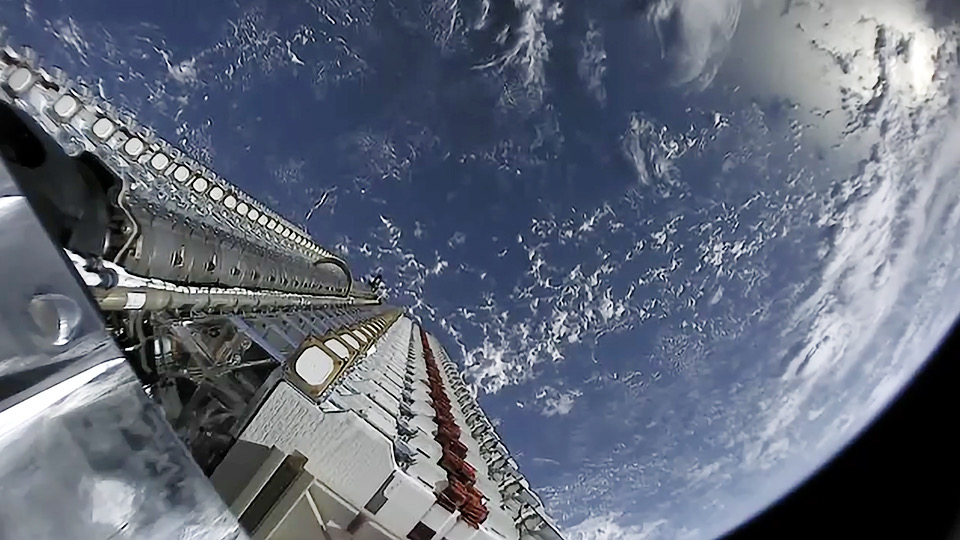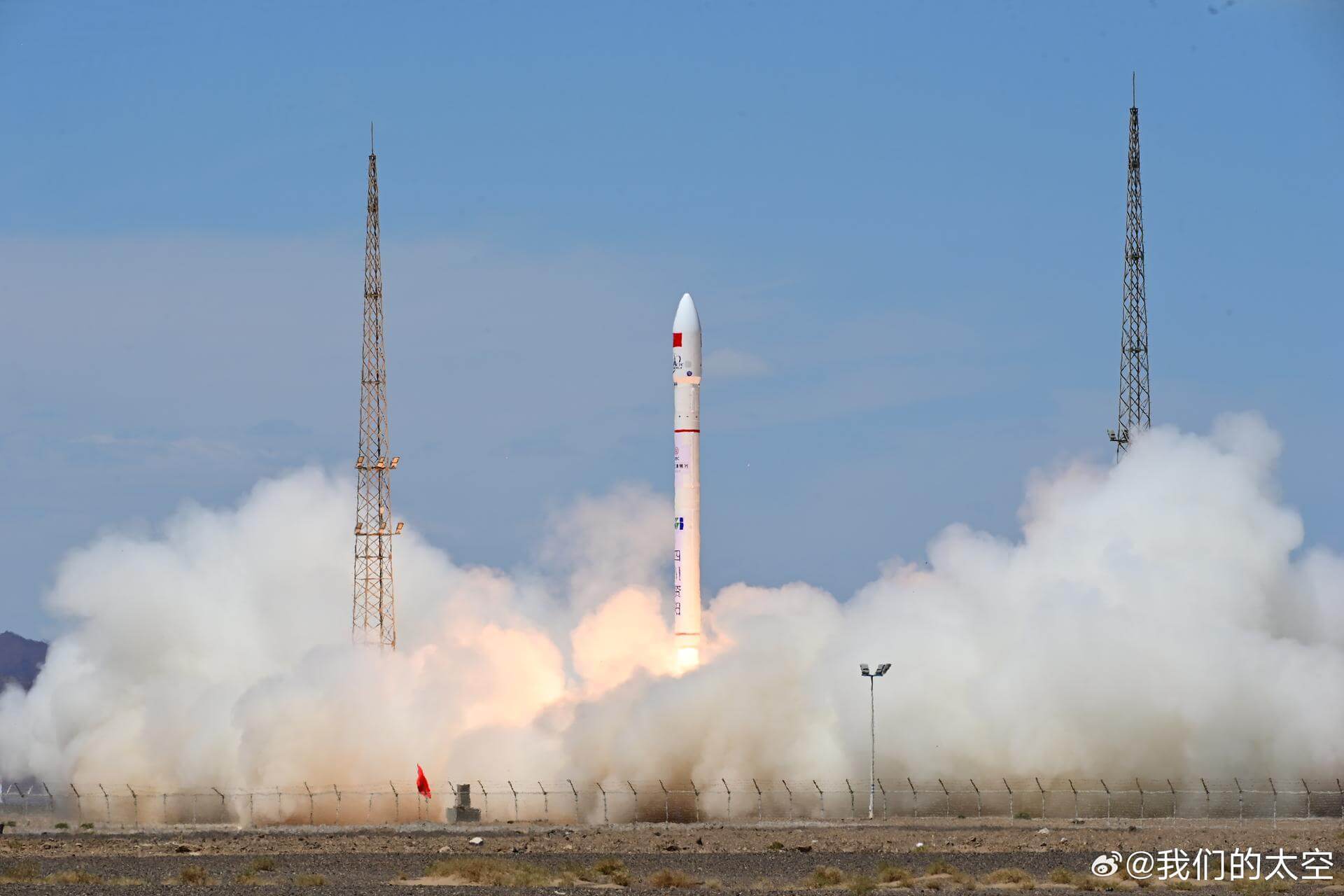· space brief · 5 min read
Space Brief 26 Apr 2025
Today's brief covers major developments including the introduction of BAHA drones, increased defense spending by Estonia, and consequential announcements on military budgets impacting space-related activities.

📄Top Stories
The Turkish military has officially integrated the BAHA ‘sub-cloud’ drones into their operations, promising enhanced surveillance capabilities. Meanwhile, Estonia’s parliament has approved a significant 5.4 percent GDP allocation to defense, signaling robust investment in satellite and air force capabilities. The U.S. continues to ramp up its military spending, with a report projecting nearly $1 trillion for nuclear arsenal modernization, a move with substantial implications for defense satellites.
📰Detailed Coverage
Turkish Military Deploys BAHA ‘Sub-Cloud’ Drones
Turkey has advanced its military capabilities by officially accepting the BAHA ‘sub-cloud’ drones, bridging the gap between smaller tactical UAVs and more substantial long-range systems. This new classification promises versatility and adaptability in various climate conditions, offering unprecedented support for national defense operations.
The BAHA drones utilize advanced communication technology, potentially impacting satellite operations by requiring enhanced data relay and integration with existing surveillance satellites. As these drones are deployed, we may see increased interest in satellite communication optimizations to support their extensive operational ranges.
Read the full story: Breaking Defense
Estonia Bolsters Defense with Major Budget Increase
With a decisive budget increase, Estonia is escalating its defense initiatives, reflecting a total allocation of $3.2 billion, equivalent to 5.4 percent of its GDP. This substantial financial commitment underscores a regional focus on bolstering military capabilities, particularly within the air force and associated satellite infrastructures.
This increase in defense spending highlights an ongoing trend among NATO members to enhance surveillance and communication infrastructures, relevant to satellite tracking and potential deployment of defense-related satellites. Estonia’s commitment underscores the strategic importance their government places on fortifying defense mechanisms against regional threats.
Read the full story: Breaking Defense
U.S. Defense Budget Swells to Support Nuclear Arsenal
The Congressional Budget Office’s latest report projects the U.S. will spend $946 billion over the next decade to modernize its nuclear arsenal. This sharp increase reflects a 25 percent rise in estimated costs and highlights strategic investments in both physical and psychological deterrents through technological upgrades.
The modernization effort will likely involve significant updates to the communication and control systems which manage the arsenal. Satellite systems play a critical role in this, necessitating robust tracking and real-time communication capabilities—a key focus area in our satellite tracking app, providing users with insights into the implications of such large-scale defense expenditures.
Read the full story: Breaking Defense
Pentagon’s Push for Open-Source Advancements in 5G, 6G
The Pentagon is driving an initiative to engage vendors for open-source software developments in next-generation 5G and 6G networks. Scheduled for May 7, an online industry day will lay the groundwork for proposals and subsequent contracts aimed at fostering technological agility and resilience in communication systems.
These advancements play a crucial role in modernizing military communication, satellite coordination, and overall battlefield connectivity. Such moves ensure that satellite communication systems stay ahead of potential threats, providing a pivotal foundation for operational command and control.
Read the full story: Breaking Defense
Elon Musk’s Role in Air Force’s Future Leadership
In a surprising move, Elon Musk participated in the interview process for the top civilian role in the Air Force. While SpaceX maintains a technical relationship with military operations, Musk’s involvement highlights the increasing convergence of private space industry leaders in strategic defense decisions.
This development is worth monitoring as it reflects an evolving perspective on private sector involvement in government operations, particularly in areas affecting space strategy and satellite technology deployments.
Read the full story: Breaking Defense
🛰️Satellite Spotlight
- Satellite Name: GSAT-6A
- NORAD ID: 43241
- Launch Date: 2018 Mar 29
- Mission: Communication
- Orbit: Inclination 2.3397°, Period 1.19315428, Eccentricity 0.1301089
- Operator: ISRO
- Fun Fact: GSAT-6A is equipped with transponders tailored for both military and civilian communications, enhancing India’s communication infrastructure.
Current TLE Data:
1 43241U 18027A 25115.88509443 -.00000071 00000+0 00000+0 0 9994
2 43241 2.3397 92.1207 1301089 90.5333 340.8948 1.19315428 30885Track this satellite in real-time on our web app: Track GSAT-6A
🚀 Upcoming Space Launches
April 27
-
Firefly Aerospace Alpha:
- FLTA006 (Message in a Booster) from Vandenberg SFB, CA, USA (13:37 UTC) Sixth flight of the Firefly Alpha small satellite launcher, demonstrating Lockheed Martin’s new LM400 satellite bus.
-
China Aerospace Science and Technology Corporation Long March 3B/E:
- Unknown Payload from Xichang Satellite Launch Center, People’s Republic of China (15:44 UTC)
-
SpaceX Falcon 9 Block 5:
- Starlink Group 11-9 from Vandenberg SFB, CA, USA (22:41 UTC) A batch of 27 satellites for SpaceX’s Starlink mega-constellation for space-based internet communication.
April 28
-
SpaceX Falcon 9 Block 5:
- Starlink Group 12-23 from Cape Canaveral SFS, FL, USA (02:58 UTC) A batch of 23 satellites for SpaceX’s Starlink mega-constellation for space-based internet communication.
-
China Aerospace Science and Technology Corporation Long March 5B/YZ-2:
- SatNet LEO Group TBD from Wenchang Space Launch Site, People’s Republic of China (20:02 UTC) A batch of LEO communication satellites for the Chinese state-owned SatNet constellation.
-
United Launch Alliance Atlas V 551:
- Project Kuiper (KA-01) from Cape Canaveral SFS, FL, USA (23:00 UTC) Project Kuiper is a mega constellation of satellites managed by Kuiper Systems LLC, a subsidiary of Amazon.
April 29
-
SpaceX Falcon 9 Block 5:
- Starlink Group 12-10 from Kennedy Space Center, FL, USA (01:37 UTC) A batch of 23 satellites for SpaceX’s Starlink mega-constellation for space-based internet communication.
-
Arianespace Vega-C:
- Biomass from Guiana Space Centre, French Guiana (09:15 UTC) Biomass is an ESA mission aimed at measuring carbon density stored in the world’s forests using a P-band synthetic aperture radar.
April 30
- Gilmour Space Technologies Eris-1:
- Maiden Flight from Bowen Orbital Spaceport (00:00 UTC) Maiden flight of Gilmour Space’s Eris orbital launch vehicle.
May 1
- SpaceX Falcon 9 Block 5:
- Starlink Group 6-75 from Cape Canaveral SFS, FL, USA (02:17 UTC) A batch of satellites for SpaceX’s Starlink mega-constellation for space-based internet communication.
Note: Launch dates and times are subject to change due to technical or weather considerations.

Maurice Stellarski




